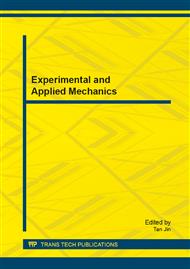p.3
p.8
p.12
p.19
p.25
p.33
p.41
p.47
p.53
Adsorptive Removal of Cr(VI) from Aqueous Solution over Material: Optimisation through Response Surface Methodology
Abstract:
In the present study, organic-inorganic hybrid mesoporous material (HMC) were used to optimize the removal rate for Cr (VI) by applying Response Surface Methodological approach. Batch mode experiments were also carried out to assess the adsorption equilibrium in aqueous solution. The effect of three parameters, that is pH of the solution (1.52.5), initial concentration (100500 mg/L) and adsorbent dose (0.050.15 g/ 50 mL) was studied for the removal of Cr (VI) by HMC. BoxBehnken model was used as an experimental design. The optimum pH, adsorbent dose and initial Cr (VI) concentration were found to be 2.0, 0.05 g/L and 500 mg/L, respectively. Under these conditions removal adsorption capacity of Cr (VI) was found to be 337..
Info:
Periodical:
Pages:
25-30
Citation:
Online since:
February 2014
Authors:
Keywords:
Price:
Сopyright:
© 2014 Trans Tech Publications Ltd. All Rights Reserved
Share:
Citation:


